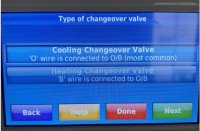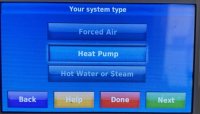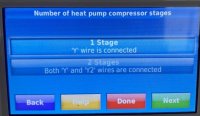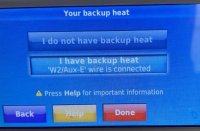MichaelSK
Member
Honeywell RTH7560 thermostat keeps the reversing valve energized even when “mode” is set to “off”. There is no need to keep a nominal 26vac on the (orange) lead, the reversing valve solenoid remains very hot when the system is not being used. I spoke with the Honeywell consumer help rep who stated that the thermostat should de-energize the valve when the mode is set to “off”.
My concerns are: 1) this is the third thermostat (same model), 2) I called the technical guys at Honeywell and asked if there was a recall - he responded “no there is no a recall on that thermostat,” 3) my valve gets very hot 168 f after 10 minutes, 4) seems that this behavior would shorten the reversing valve life-span, 5) could be a fire hazard, 6) this thermostat is widely used, few consumers would be aware that the device is energizing their reversing valve when the system is off. Indeed, how many repairs and shortened system lifespans are r/t to this behavior?
One last question, the consumer, i.e. nontechnical rep, stated that the thermostat should not be energizing the reversing valve - what’s your experience? IMHO, the reversing valve should only be energized in most heat pumps when the system is actually RUNNING in COOL; the thermostat should not be keeping the valve energized when the system is idle - perhaps for months at a time.
My concerns are: 1) this is the third thermostat (same model), 2) I called the technical guys at Honeywell and asked if there was a recall - he responded “no there is no a recall on that thermostat,” 3) my valve gets very hot 168 f after 10 minutes, 4) seems that this behavior would shorten the reversing valve life-span, 5) could be a fire hazard, 6) this thermostat is widely used, few consumers would be aware that the device is energizing their reversing valve when the system is off. Indeed, how many repairs and shortened system lifespans are r/t to this behavior?
One last question, the consumer, i.e. nontechnical rep, stated that the thermostat should not be energizing the reversing valve - what’s your experience? IMHO, the reversing valve should only be energized in most heat pumps when the system is actually RUNNING in COOL; the thermostat should not be keeping the valve energized when the system is idle - perhaps for months at a time.




